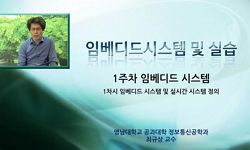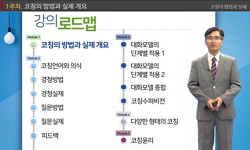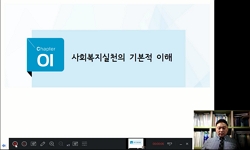법화경의 실상의 경지를 깨닫는 법화삼매는 중국에서 慧思에 의해 창안되었다. 혜사는 이 수행법을 그의 제자 천태와 백제 현광에게 보현도량과 사안락행을 통하여 전하였다. 혜사의 법화...
http://chineseinput.net/에서 pinyin(병음)방식으로 중국어를 변환할 수 있습니다.
변환된 중국어를 복사하여 사용하시면 됩니다.
- 中文 을 입력하시려면 zhongwen을 입력하시고 space를누르시면됩니다.
- 北京 을 입력하시려면 beijing을 입력하시고 space를 누르시면 됩니다.

일반논문 : 동북아(東北亞) 삼국의 법화삼매(法華三昧) 행법체계(行法體系) 연구(硏究) = On the Practice System of the Saddharma-pundariika-samadhi 法華三昧 in Northeast Asian Buddhism
한글로보기https://www.riss.kr/link?id=A60119179
- 저자
- 발행기관
- 학술지명
- 권호사항
-
발행연도
2012
-
작성언어
Korean
- 주제어
-
KDC
150
-
등재정보
KCI등재
-
자료형태
학술저널
- 발행기관 URL
-
수록면
333-361(29쪽)
- 제공처
- 소장기관
-
0
상세조회 -
0
다운로드
부가정보
국문 초록 (Abstract)
법화경의 실상의 경지를 깨닫는 법화삼매는 중국에서 慧思에 의해 창안되었다. 혜사는 이 수행법을 그의 제자 천태와 백제 현광에게 보현도량과 사안락행을 통하여 전하였다. 혜사의 법화삼매사상은 『法華經安樂行義』에 들어 있다. 그러나 여기에는 아직 수행법으로 정립되지 않아서 행법화에 이르지 못하였다. 그후 天台는 자신의 수행경험과 법화경의 수행법을 통합하여 『法華三昧懺儀』 라는 수행의례로 만들어 전하였다. 이 수행법은 후대에 한국과 일본에도 전해져서 동북아 삼국에서 신행되었다. 이 법화삼매 수행법은 중국 일본 한국에 전승되면서 그곳의 시대와 상황에 따라 특징있는 수행법으로 정립되었다. 일본에서는 『法華懺法』으로 재창안되어 신행되었고, 우리나라에서도 『妙法蓮華經三昧懺法』으로 재창안되어 수행되었다. 이와 같이 중국의 천태대사 『법화삼매참의』라는 단일의 법화삼매수행법이 삼국의 천태종에서 수용되어 동북아시아 삼국이 공통의 수행법이면서 각국의 실정에 맞는 특징있는 법화삼매수행법으로 전개된 것이다. 중국에서는 『법화삼매참의』 原典으로부터 觀法과 懺悔法을 중심으로 수행체계에 變用이 보이고 있다. 일본에서는 참회법과 여러 作法儀禮가 첨가되고, 수행체계도 간소화하여 축약된 법화삼매가 신행되었다. 한편 근래에 발견된 우리나라의 『묘법연화경삼매참법』은 기존의 중국과 일본에서 신행되는 수행법의 변용을 뛰어 넘는 획기적인 수행체계를 보여주고 있다. 그것은 기존 수행법들, 중국과 일본의 수행법은 모두 법화경 전품을 상대로 한 법화삼매 수행법이었으나, 고려의 것은 법화경 각 품에 하나씩의 법화삼매수행법을 개발하여 수행한 것이다. 이것은 법화경 전품이 같은 법화삼매의 경지라 하다더라도, 각 품마다의 법화삼매의 경지에 들어가는 관법과 수행체계의 차이가 있어서 이를 고려하여 각 품에 맞는 법화삼매 수행법을 제시한 것이다. 이와 같이 동북아시아 삼국의 법화삼매 수행법은 그 나라의 실정에 맞는 觀法과 懺悔行 讀誦法을 구사하고 있다.
다국어 초록 (Multilingual Abstract)
The Saddharma-pundariika-samadhi (hereafter, SPS) 法華三昧 is awakening to the true aspect of the Lotus Sutra. It was created by Huisi 慧思 in China, who passed this practice down to his disciple Tiantai and Hyeon-gwang from Baekje Korea through...
The Saddharma-pundariika-samadhi (hereafter, SPS) 法華三昧 is awakening to the true aspect of the Lotus Sutra. It was created by Huisi 慧思 in China, who passed this practice down to his disciple Tiantai and Hyeon-gwang from Baekje Korea through the ``four means of attaining peace`` 四安樂行 at the Samantabhadra practice site 普賢道場. Huisi`s thought of the SPS is recorded in the Doctrine of the means of attaining peace in the Lotus Sutra 『法華經安樂行義』. However, Huisi`s SPS failed to become a complete practice system as it was not established as an independent practice method. Thereafter, Tiantai integrated his own experience and the practice method of the Lotus Sutra into a ritual of practice, the Repentance Ritual of the Saddharma-pundariika-samadhi 『法華三昧懺儀』. This practice was transmitted to Korea and Japan and thus got to be performed by the three countries of Northeast Asia. As this SPS practice was handed down to China, Japan, and Korea, it was transformed according to their own periods and circumstance and established as their unique practice methods. In Japan, the SPS was re-created as the Ritual of Repentance Based on the Lotus Sutra 『法華懺法』; in Korea, as the Ritual of Repentance of Based on the Samadhi of the Lotus Sutra 『妙法蓮華經三昧懺法』. Like this, Tiantai`s Repentance Ritual of the Saddharma-pundariika-samadhi 『法華三昧懺儀』 was accepted by each Tiantai Order of the three countries of Northeast Asia as their common but somewhat transformed practice methods. In Chinese Tiantai, such transformations were made in its practice system, especially in the insight method 觀法 and repentance ritual 懺悔法. In Japanese Tendai, some processes of repentance and various rituals were added while its practice system was simplified so that it could be called a brief version of the SPS. Meanwhile, Korea`s Cheontae practice, according to the recently found Ritual of Repentance of Based on the Samadhi of the Lotus Sutra 『妙法蓮華經三昧懺法』, showed an innovative system that transcends the transformations made by Chinese and Japanese counterparts. After all, as for both the Chinese and Japanese systems, their practice methods were intended for all the chapters of the Lotus Sutra; as for Goryeo`s, however, the practice methods were for each chapter to be performed differently. The reason for Goryeo`s unique method is that, though all the chapters of the Lotus Sutra describe the same stage of the SPS, each chapter, nevertheless, differs in their insight method and practice system for attaining the samadhi. This being so, it is necessary to present different samadhis appropriate for each chapter. In this manner, the practice systems of the SPS in the three countries of Northeast Asia have been performed according to each country`s own insight method and repentance practice, and sutra reciting method.
동일학술지(권/호) 다른 논문
-
기획논문 : 삼봉(三峰) 정도전(鄭道傳)의 개혁사상(改革思想)
- 동양철학연구회
- 조항덕 ( Hang Deok Cho )
- 2012
- KCI등재
-
- 동양철학연구회
- 이상성 ( Sang Seong Lee )
- 2012
- KCI등재
-
- 동양철학연구회
- 김문준 ( Moon Joon Kim )
- 2012
- KCI등재
-
기획논문 : 다산(茶山) 정약용(丁若鏞)의 최고 정치지도자론 탐색
- 동양철학연구회
- 안외순 ( Woe Soon Ahn )
- 2012
- KCI등재




 KISS
KISS





